Furniture Blog
Custom Furniture Gallery
Flying Woodwork
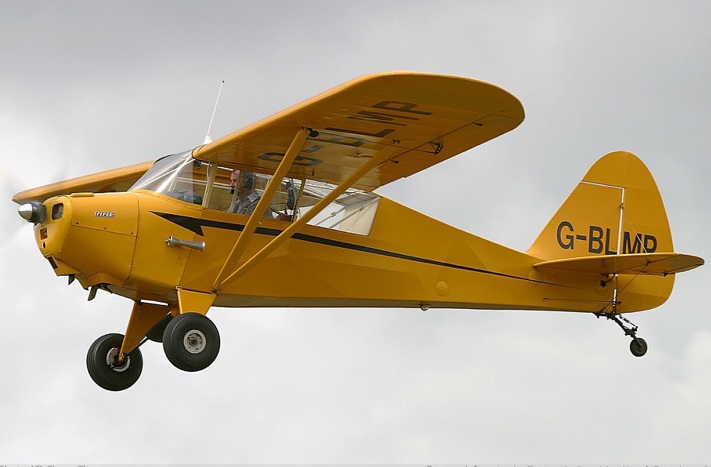
I don't know about you, but when I think about what airplanes are made of, I think about aluminum. That might be true for jets and airliners, but, in fact, it turns out that there are lots of airplanes that are largely made of wood and fabric, with maybe a little fiberglass and metal here and there.
After WW ll the Piper aircraft company was in tough economic shape. They had had success with the famed Piper Cub, but needed another big hit to save their financial bacon. In 6 weeks, under duress from their investors, they designed the Piper Vagabond; a two seater with cruising speeds over 100 mph. They made about 600 of them.
At some point the company Wag-Aero started selling kits to build your own version of the Vagabond. The called it the Wag-a-Bond and it was advertised as a cross country plane that was great for camping! Now, that's old school. Build yourself an airplane and take it out on camping trips. I love it.
A friend of mine bought one of these recently from a guy in California. On his way home from picking it up, he stopped in Grants, NM to fuel up, had some sort of brake issue on landing and clipped one of his wings on something. Busted it all to hell. Bummer. Since the wings are just bolted on, you can pop them off and replace them. But they aren't cheap. That's when he called me.
Parquetry on a bow front Custom Sideboard
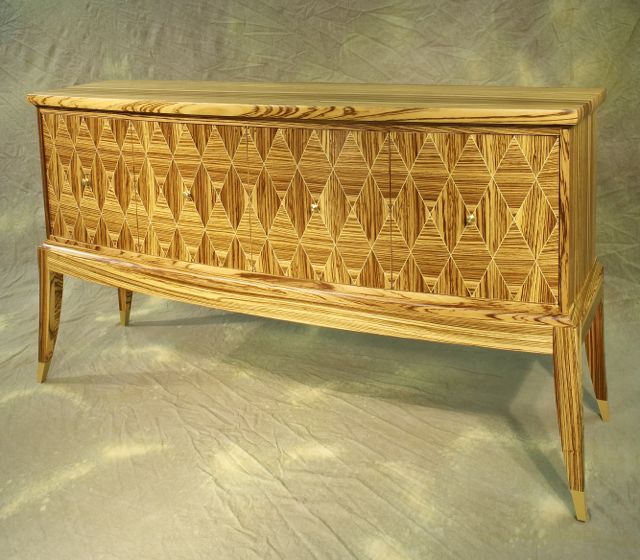
parquetry |ˈpärkitrē|
noun
inlaid work of blocks of various woods arranged in a geometric pattern, esp. for flooring or furniture.
This custom sideboard was inspired by a media cabinet that I built some years ago. That cabinet also had a diamond pattern across it's doors and alternating grain in the diamonds. The zebrawood used for the parquetry on this piece has a very strong linear grain that really makes the pattern pop in interesting ways.
The carcass of the cabinet itself was relatively straight forward; a top and a bottom dovetailed to two sides. The top and bottom panels both have a bow cut on them, and the sides are made from thick material that is also shaped to a curve. The box sits on a curved cove moulding and is attached to the bowed leg assembly.
It was the parquetry on the four doors that was the fussy part of the project.
Building a custom nightstand with drawers
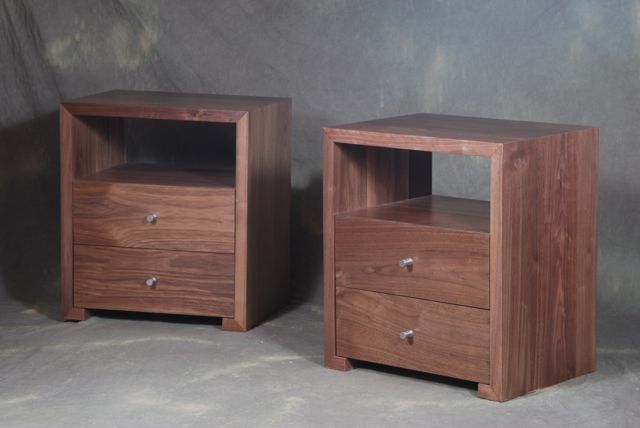
I recently had an order for a pair of custom walnut nightstands from a decorator in Colorado who I've done a bunch of work for in the past. She supplied a picture and some dimensions for me to build from. Working drawings weren't necessary for this one. I've built some like this before so I was ready to crank them out.
Making Wood from Weeds

We don't think about the biggest ecological disaster in US history very much these days. When we think of the Dustbowl at all we think Grapes of Wrath and displaced people searching for a place to go where it rained and food grew. We don't think about the huge, almost daily, sky blotting "dusters" that buried houses, fences and livestock in drifting dunes, filled peoples lungs with dirt and dropped tons of dust in far away places like Chicago and Washington D.C. The price of wheat was high in the early 1900's and the US government was still giving away land for homesteading. People were moving out west, plowing the short grass prairies under, growing record wheat crops and making a lot of money. What they didn't realize was that they were living in an historically wet period. When the precipitation returned to 'normal' the amazing topsoil, that had built up over thousands of years, quickly began to blow away.
With the dusters blowing up and dunes covering large parts of Colorado, New Mexico, Oklahoma, Kansas and Texas, the newly formed Soil Conservation Service was desperate to find plants that would grow in these new conditions and hold down the soil that remained. They found some. It pretty much worked.
As a Landscape Architecture student in college I took semesters of classes on landscape plants. Occasionally we would learn about a plant that was originally brought to the country for 'soil stabilization'. I thought they were talking about highway embankments! I didn't realize that someone imported them to try to hold down the middle of the continent. The legacy of the dustbowl continues 80 years later with these invasive species.
Restoring an historic handrail
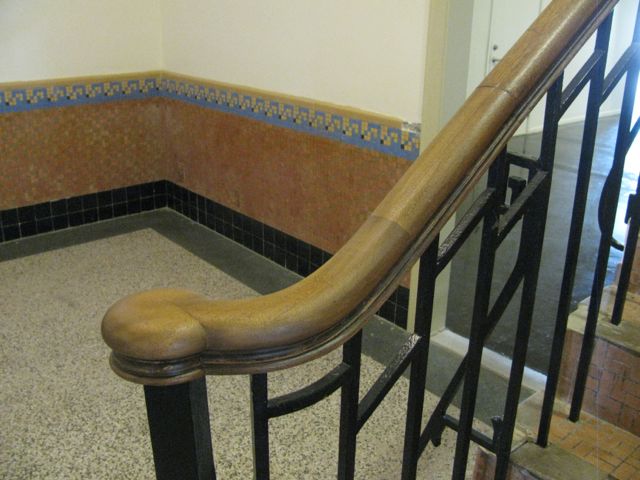
It doesn't look like 20 hours of work, but there's some tricky business in a little project like this piece of handrail.
Last year I spent 9 months working on an historic preservation project in Clovis, NM. The Hotel Clovis was, in it's heyday, a prety big deal. When it was built in 1930 it was the biggest building between Dallas and Los Angeles. The Glen Miller orchestra, Louis Armstrong, and Bob Wills all played dances in the ballroom on the second floor of the hotel. It was a big stop on the railroad and is just down the street from the railroad station and the Harvey Hotel. By the late 70"s the hotel was in decline and when the train quit stopping, it was the death knell.
After being abandoned for 25 years or so, a developer from Santa Fe took on the project of turning the hotel into low income housing. Since somone along the way had gotten it put on the Historic Register, the place had to be restored instead of simply being gutted.
So, the last part of the restoration that I worked on was the 18" piece of missing handrail where the staircase comes down into the lobby. Since this is historic preservation we're talking about, I couldn't simply toss out the remaining handrail and start from scratch with something off the shelf. Instead I had to make a chunk of handrail to match the existing.
Building the Shark Tank marquetry cabinet

Marquetry is a technique where you cut various wood veneers on a scroll saw and piece them together to make pictures. The technique has been around for a long time. The pharaohs had marquetry on their furniture. It was big in the Renaissance, where it was often used in trompe l'oeil and it really hit it's stride during the Art Nouveau period. Since then.......not so much.
As a craft, marquetry requires precision, time, skill and the eye of an artist. Not to mention a range of wood veneers in various colors, tones, shades and grain patterns. When I designed this custom cabinet for my client I knew that it would be a challenge to make wood look like water.
Making the tambour door credenza
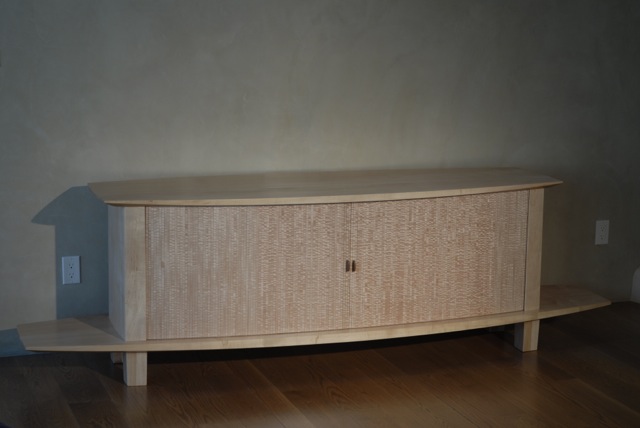
This custom maple credenza was built for a client of mine in Santa Fe. It has tambour doors (like a roll top desk, but they slide horizontally) that are made from curly maple. You can read about how the design process worked on this blog post about designing this custom credenza.
The construction process started with a full scale plan drawing of the inside of the cabinet which showed the track that the tambour doors ran in, the location of the interior dividers and the location of the false sides and false backs that hide the doors from view when they are open. The drawing also showed the shape and location of the routing template that I needed to route the tambour door dado.








